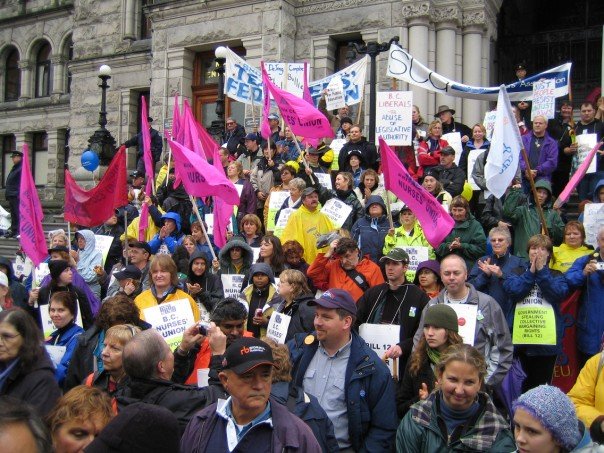Trade unionists across the country were delighted to see the Supreme Court of Canada finally recognize a constitutional right to strike. The landmark decision overturned legislation impeding the right to strike, and acknowledged that the right to strike is a form of freedom of association. The decision also recognized that legislative interference in the right to strike gives undue power to employers, who already have the upper hand in bargaining. Justice Abella wrote in her judgement: “In essentially attributing equivalence between the power of employees and employers, this reasoning, with respect, turns labour relations on its head, and ignores the fundamental power imbalance which the entire history of modern labour legislation has been scrupulously devoted to rectifying.”
This comes as welcome relief, particularly to public sector workers and workers in parts of the private sector, such as Air Canada, who have been subject to repeated government interference. Indeed it may provide some relief to unions that are habitually legislated back to work or worse, have had contracts imposed by legislation. As Leo Panitch and Donald Swartz have noted, Canadian governments might say that legislation is a last resort, but in practice follow a doctrine of permanent exceptionalism. Every strike is deemed special enough to require government interference.
Yet it is a mistake if those of us in the trade union movement think this is a panacea. Laws and legal challenges do not win gains for workers. They may influence the environment in which workers’ struggles take place, but no court decision will turn the tide of neoliberalism. To do that, workers need to use the right to strike – big time.
It is no secret that for about thirty years the labour movement has suffered one defeat after another. The approach to this downturn in struggle by unions has largely taken the form of trying to minimize concessions. A placard from the 2004 rallies against the BC Liberal government summed it up with the slogan: “These cuts are too deep.” As if small cuts are OK.
It is also no secret that we need an upsurge in the labour movement more than ever. Growing inequality, gutted social services and regressive tax changes are completely eroding most workers’ quality of life. Middle income earners are disappearing, poverty is rising and the division between the super rich and the rest of us is continuing to grow. As a social force, unions are one of the best antidotes to challenge and confront these effects of neoliberalism.
The courts have recognized the right to strike, the challenge now is to use that right. What the courts acknowledged is that the strike is the ultimate and most powerful tool that workers have to confront the unfair advantage of employers under capitalism. Only when workers successfully strike can they win gains — be they wage increases, health and safety measures, or even gains to the social wage such as maternity leave or paid sick days.
The last time workers made significant gains was during the upsurge of the 70s and 80s. Public sector workers, in particular, made terrific inroads in improving wages and benefits and the social wage to large numbers of workers. They won legal rights (including the right to strike), they won important social justice battles, such as pay equity, and they reduced the level of inequality in society. Unions did this by striking, and striking often. Numbers of strikes were high, numbers of strike days were high and numbers of workers participating in strikes were high. This meant that employers were scared — scared that one strike would be the catalyst for more.
That last upsurge came in the wake of growing social movements — the women’s movement, the fight against the Vietnam war, the Black Power movement. But arguably we are beginning to see signs of growing social movements again today. Idle no more, #BlackLivesMatter, the fight to increase the minimum wage, the disgust with Stephen Harper, the raised awareness of rape culture and gender oppression — all are signs of an increased politicization across society. These conditions create an opening for workers to argue for much more militant action by their unions.
A change will not come without some struggle, and re-learning some lessons and refashioning our organizations. The recent BC teachers strike is a case on point. After a decade of facing legislative intervention, teachers were not really prepared for a long battle. Our strike fund was low. We were shocked by a partial lockout. We were not ready for the government tactic of trying to starve us out. We were used to three day strikes.
The broader labour movement will also need to re-learn the levels of solidarity needed to win. It will not be enough to send solidarity greetings or even to loan money. We need to re-learn the use of coordinated bargaining and sympathy strikes, and we need to repair broken relationships based on employers attempts to divide us. Most of all, many unions will need to stop looking to legal strategies, expensive advertising campaigns, or trying to elect a friendly government, and instead start actively employing labour’s most powerful weapon: the right to strike.
This post also appears on my personal blog site: www.staffroomconfidential.com



